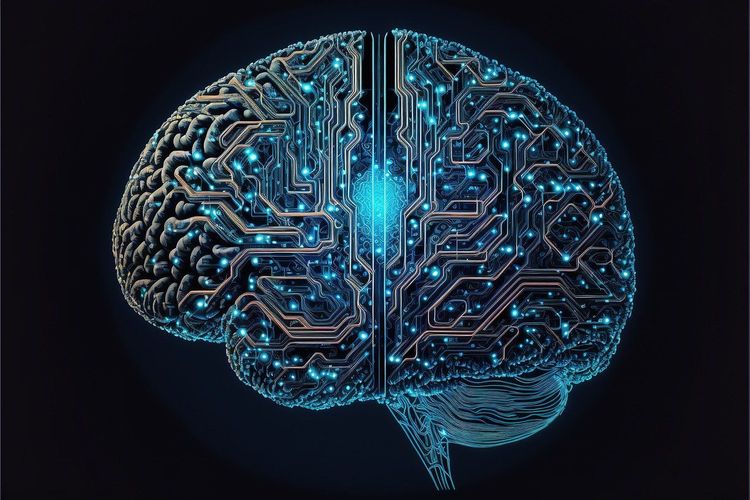ChatGPT Celebrates Its First Anniversary: A Year of Transformation in AI
Today marks a significant milestone for ChatGPT, OpenAI’s revolutionary AI chatbot, as it turns one year old. Launched just a year ago as a “low-key research preview,” the introduction of ChatGPT was reportedly influenced by intense competition with AI startup Anthropic. OpenAI's leadership emphasized the importance of collecting user data to inform the development of future AI models.
Initially, ChatGPT was a straightforward, free-to-use web interface built on OpenAI's existing GPT-3.5 model. However, it quickly escalated to become the company’s most popular product ever, achieving the title of the fastest-growing consumer app in history.
On the eve of its launch, Sam Altman tweeted about the final preparations at OpenAI's office, reflecting on what an incredible year it has been.
Since its debut, ChatGPT has introduced paid tiers offering advanced features, including a specialized plan for enterprise customers. Enhanced capabilities now include web searching, document analysis, and image creation through DALL-E 3. Furthermore, utilizing in-house speech recognition, voice synthesis, and text-image comprehension technology, ChatGPT can now “hear,” “speak,” and “see.”
As a result, ChatGPT has become a focal point for OpenAI, transforming from a standalone product into a versatile platform for innovation. This shift has also influenced other AI companies and research institutions.
In response to ChatGPT's success, Google launched Bard, a comparable AI chatbot, in February. An influx of rivals and variations have entered the market since, including Amazon Q, a business-focused adaptation of ChatGPT. Google’s AI research lab, DeepMind, is poised to launch its next-generation chatbot, Gemini, by year’s end.
Stella Biderman, an AI researcher at Booz Allen Hamilton and a member of the open research group EleutherAI, noted that while she doesn’t classify ChatGPT as a groundbreaking AI, it has certainly revolutionized user interactions with AI—bringing generative AI into the mainstream. “The primary impact of ChatGPT has been to inspire AI developers to mimic its functionalities, while also encouraging researchers to study it in depth,” Biderman stated. “Whereas earlier models required some degree of expertise to use effectively, ChatGPT changed that dynamic—sparking widespread interest and conversation around the technology.”
ChatGPT continues to attract significant attention, as highlighted by statistics from Similarweb. The platform recorded 140.7 million unique visitors in October, with its iOS and Android applications boasting 4.9 million monthly active users in the U.S. alone. Additionally, analytics firm Data.ai estimates the apps have generated nearly $30 million in subscription revenue since their launch a few months ago.
Its lasting appeal stems partly from its ability to conduct “convincingly real” conversations. Ruoxi Shang, a third-year PhD student at the University of Washington, explained that while chatbots have existed for decades, the advanced models behind ChatGPT offer a far more sophisticated experience. “Conversational interfaces play a key role in enhancing information understandability, and the social aspects of chatbots boost engagement,” she noted. "AI models can now facilitate conversations virtually indistinguishable from human dialogues."
Moreover, Adam Hyland, a fellow PhD student studying AI at the University of Washington, highlighted the emotional dimension of user interactions with ChatGPT. He drew parallels between ChatGPT and ELIZA, a 1960s chatbot, stating that users consistently attribute emotional depth and narrative contexts to their interactions with ChatGPT.
Impressively, even skeptics like Kevin Roose from The New York Times are recognizing ChatGPT as “the best AI chatbot ever released to the general public.” In The Atlantic’s list of “Breakthroughs of the Year” for 2022, Derek Thompson described ChatGPT as a notable part of the generative AI revolution poised to redefine work, thought processes, and human creativity.
ChatGPT's capabilities extend well beyond simple dialogue. It can efficiently complete and debug code, compose music and essays, answer exam questions, generate business ideas, write poetry and song lyrics, translate and summarize text, and even simulate computing environments.
An MIT study found that ChatGPT helped reduce task completion times by 40% and improved output quality by 18% for tasks such as crafting cover letters and delicate emails.
Nevertheless, there are mixed reports regarding the actual usage of ChatGPT. A Pew Research survey from August revealed that only 18% of Americans had ever used ChatGPT, with many engaging with it primarily for entertainment or occasional inquiries. Moreover, the survey indicated that only two in five teenagers had interacted with the technology in the previous six months.
Limitations of ChatGPT may explain this underutilization. While its capabilities are impressive, ChatGPT is not without flaws. Due to how it was trained—predicting the most likely subsequent words from vast amounts of textual data—ChatGPT can sometimes generate “hallucinations,” producing answers that seem plausible but are factually incorrect. These tendencies have led to its exclusion from platforms like Stack Overflow and have triggered lawsuits over generating misleading content.
As we look to the future, what awaits ChatGPT in its second year? Thankfully, many anticipated issues around its potential misuse have not materialized on a large scale. Concerns about ChatGPT generating widespread disinformation provoked European policymakers to impose security assessments for generative AI applications. Furthermore, over 20,000 individuals, including prominent figures like Elon Musk and Steve Wozniak, signed an open letter urging a pause on large-scale AI experiments like ChatGPT.
So far, there have been few documented instances of abuse—indicative of a cautious adoption of the technology.
With the introduction of GPTs—OpenAI’s tool for creating customized AI systems powered by its models—ChatGPT may evolve into a gateway for a more extensive ecosystem of AI chatbots. Users can now tailor models for specific purposes, such as answering ingredient questions for a recipe or analyzing proprietary codebases.
Among the initial GPTs offered by OpenAI are features like a Gen Z meme translator, a coloring book creator, a data visualizer, a board game guide, and a creative writing assistant. While ChatGPT can perform these tasks with elaborate prompts, GPTs will simplify the process significantly, potentially altering the burgeoning industry of prompt creation for ChatGPT.
By introducing a higher level of personalization than ChatGPT currently offers, GPTs promise to unleash a wave of creativity. While ChatGPT's prominence may shift as GPTs enter the market, it is unlikely to fade away—it will continue to adapt and evolve in unforeseen ways.







